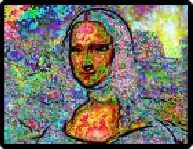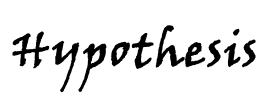
















NEXT
BACK
NEXT
BACK








Site Search
Mind / Consciousness Theory . . . . . . . . .
Brain scans of various kinds now reveal some of the functional layout and channels of the physical organ of thought. Those tools have allowed Neuroscience to emerge as a practical method for approaching the “hard” questions from the softer inner layers. At the same time, the rapid evolution of computer science has made it possible to run laboratory simulations of brain functions. At first it seemed that the creation of “Artificial Intelligence” was just beyond the next exponential speed increase of Moore’s Law. But the Mind turns out to be much harder to simulate than the brain. Some aspects of Consciousness seem to be related to paradoxical Quantum level activities, which requires the expertise of another set of specialists. [24] And the incredible number of neuronal interconnections has required the application of novel methods from the discipline of Chaos and Complexity theory. At the moment there seems to be no end in sight for the perennial quest to know the mind of Man.
Several brilliant minds have applied their talents to theoretical speculations on these topics. For example, Douglas Hofstadter, in I AM A STRANGE LOOP, points to feedback loops of information-
The conventional scientific definition of Mind is, “an epiphenomenon of the brain”. Which basically means that the mind is built upon, or an extension of, the brain. By contrast, the proposed Enformationism definition has the priority reversed. According to Plato’s theory of Forms, the essence of a thing must exist somehow prior to the particular instance of that thing. By that he meant, that the idealized design concept of a building must be created, formally, in a mind before the brick & mortar building can be constructed, physically, on the ground. Another way to look at the Real versus Ideal quandary is from the standpoint of Phenomenalism : all we know of the outside world is internal sensory Perceptions, which must be translated into mental Conceptions in order for you to become aware of them. Hence, what you “know” (cognize) is only an analogy (a model) of reality. Which means that the only thing you know directly is the information in your own mind. The material world you believe to be out there is presented to your consciousness as a virtual reality. Your physical senses interact with incoming information (such as light waves) and then interpret those abstract patterns as-
Memetics / Cultural Evolution :
Memetics is a fruitful new way of looking at human cultural evolution, which has traditionally been the purview of soft sciences such as History and Sociology. Just as Genetics revolutionized biology by establishing the mechanism underlying Darwinian evolution, Memetics promises to give us an understanding of the “mechanism” behind cultural changes over time. The Meme is a hypothetical unit of cultural information, analogous to the Gene as a unit of biological information. Both forms of information are passed along from one generation to the next by means of replication and reproduction.
Memes are assumed to be mental packages of information, similar to bits, and bytes, and words. Actually, they are metaphysical ideas and concepts, so the comparison to physical genetic information is necessarily metaphorical. Yet, even in the genetic process, what is replicated and transmitted is not physical matter, but immaterial, geometric patterns of material arrangement. The atoms that once constituted your great-




MEME WORLD
Plato postulated a world of ideal Forms, which he admitted were impossible to know. Nevertheless he formulated a very specific description of that world, which did not match his metaphysical principles. Corresponding to the world of Forms is our world, that of the mimes, a corruption of the real one. This world was created by the Good according to the patterns of the Forms. Man's proper service to the Good is cooperation in the implementation of the ideal in the world of shadows; that is, in miming the Good.
—-
WORD OF GOD
I began by making the claim that science offers a surer path than religion in the search for God. It is my deep conviction that only by understanding the world in all its many aspects–-
—-
God & The New Physics
SWARM MIND
In most modern theories of mind, the aware observer and actor we call the “self” seems to emerge spontaneously from the unified inter-